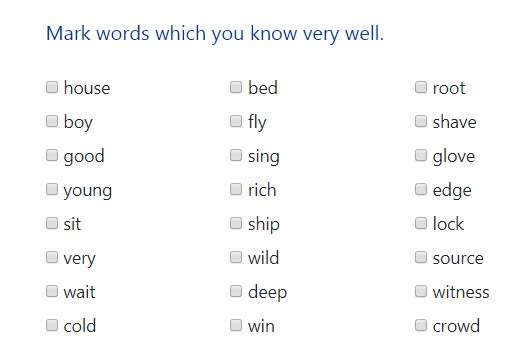Lesson 4
How to Practise Speaking
On Thursday, I go to school again. We have a new student in our class. Her name is Monica and she is from Italy.
At the beginning of the lesson, my teacher asks Monica some questions. My teacher knows Monica because Monica visited her class one year ago. It was a class for beginners and it was only for two weeks during summer holiday.
When Monica speaks, her English is beautiful. Her pronunciation is very good and she is very fluent.
My teacher is very happy and she tells Monica, “Your school in Italy must be very good.”
Monica says, “I don’t go to any school. I learn English at home. I use techniques from you. I do a lot of reading, shadowing and thinking aloud. I try to think more in English than in Italian.
This is how I work on my English. The two weeks which I spent last summer at your class helped me a lot. You showed me the way. I know how to work on my English every day. This is why I wanted to go to your class again because one year ago, I was a beginner and now I can speak English. I want to learn from you again.”
My teacher is very happy when she hears these words. She thanks Monica for her hard work.
It is all very interesting for me. I already know about reading. I also know the shadowing technique. But Monica also speaks about thinking aloud. I don’t know what it is. So I ask our teacher, “What is ‘thinking aloud’?”
Our teacher says, “It is a very effective technique. You have to have a strong motivation to learn English if you want to have benefit from this technique.
It is also good to know that for some people this technique is a little crazy. But when you start to think aloud, your English can be better very fast.”
I say, “I have a strong motivation. I don’t care if the technique is crazy. If it helps, I want to learn it. Can you teach us this technique?”
“OK, it is actually very simple. You think in your native language all day every day. It is normal. Now, you can start to think in English. And when you start to think in English, then you can think aloud. You simply say aloud what you think. It is all.”
I say, “It is very simple. Why is it very effective?”
Our teacher says, “Maybe you can ask Monica. She uses this technique. Maybe she can tell you more about this technique.”
Then our teacher asks Monica if it is OK for her to speak about her experience with thinking aloud. It is no problem for Monica.
She says, “When I started with this technique, it wasn’t easy. I started with very simple sentences. For example, ‘I can speak English. It is good that I can speak English. I want to be better. I need to practise every day. I don’t know many words. But I can use these words well. I can say my ideas with these words. I can do this. This is great.’
The sentences were really simple. But at the beginning there was one problem. My thinking in Italian was long and complicated. I wasn’t able to say in English exactly what I was saying in Italian. I needed to find a simpler form for English. To think in simple English was the hardest part. But after some time it was normal for me to think in English.
Then something interesting happened. I met a man from Australia. He was on holiday in Italy. I was still a beginner, but we started to speak English. I could see that I was able to speak with him without big problems. My sentences were simple and short, but I was able to speak. I didn’t translate in my head from Italian to English.
After the meeting with the man from Australia, I started to use thinking aloud more. This technique helped me a lot with my speaking. I still use it every day. It is really a very effective technique.”
Our teacher thanks Monica for her experience with thinking aloud. I want to use this technique because I also want to be better at speaking.
When you want to speak English fluently, think aloud.


